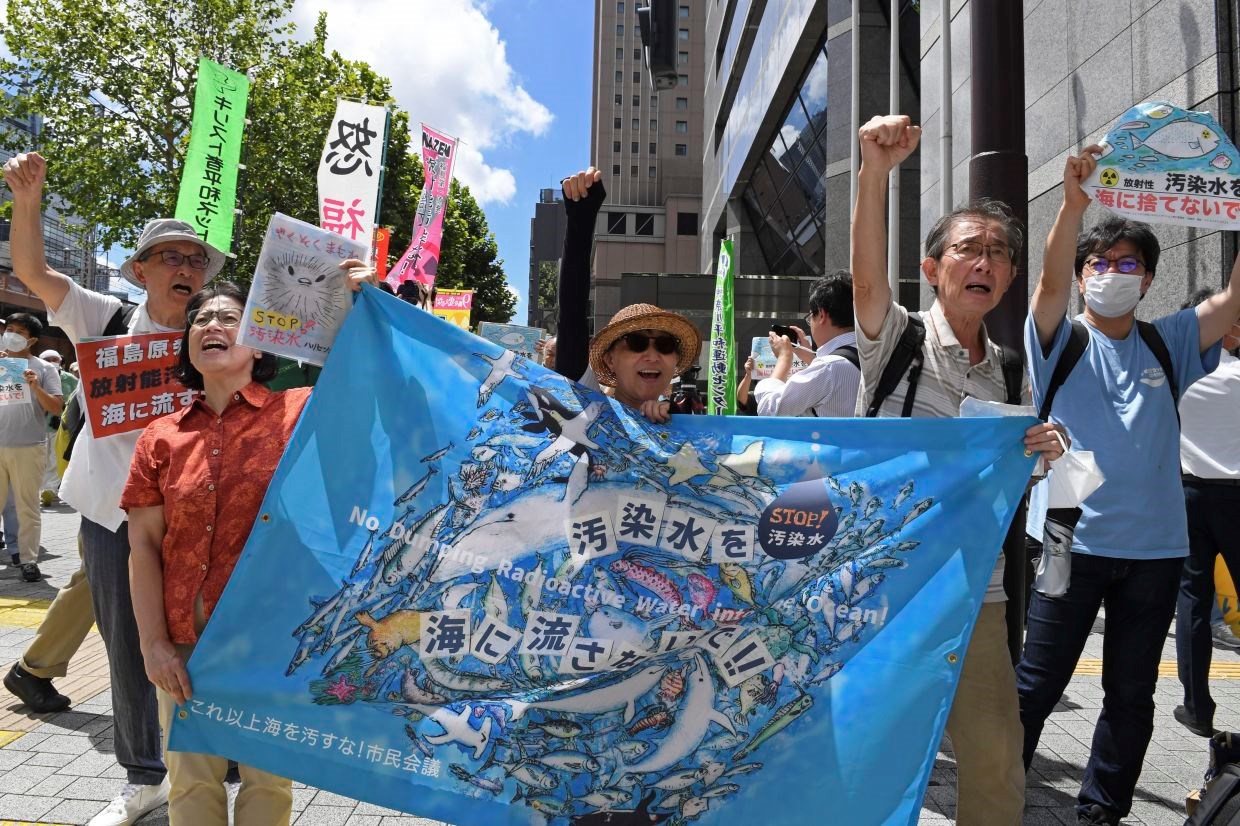Japan to release second batch of treated wastewater into ocean
The NPP's operator, Tokyo Electric Power Company, already started releasing part of the 1.34 million tonnes of the treated wastewater back in August which prompted local and international outrage.
-

Protesters hold a banner that reads "No dumping radioactive water into the ocean" during a rally in front of the TEPCO headquarters on Aug 24, 2023, in Tokyo, Japan (AP)
Reports indicate that Japan will start releasing the second load of treated radioactive water from the damaged Fukushima nuclear power plant (NPP) into the ocean today.
The NPP's operator, Tokyo Electric Power Company (TEPCO), already started releasing part of the 1.34 million tonnes of the treated wastewater back in August, which prompted local and international condemnation.
In March 2011, Fukushima suffered one of the world's worst nuclear disasters since Chornobyl after a tsunami rocked the islands.
About 1.33 million cubic meters of groundwater, rainwater, and water that was used for cooling the three damaged reactors at the Fukushima site are now being released.
To remove the radioactive elements, plant operator TEPCO treated the water using its ALPS processing systems, which several neighboring countries have expressed skepticism regarding the system's reliability.
South Korean Vice Oceans Minister Park Sung-hoon confirmed during a briefing in August that radiation testing on farmed seafood will be toughened to ease domestic tension as a result of the release of a huge amount of treated radioactive water.
The water is made up of a combination of rainwater and groundwater, and the site has been filled up to 96% with radionuclide-filtered water as of February. The site produces 100,000 liters of contaminated water on a daily basis, which is the equivalent of 3,500 cubic feet.
Although almost all of the 62 radioactive elements, such as cesium and strontium, have been removed, tritium remains present, TEPCO experts say.

 2 Min Read
2 Min Read








